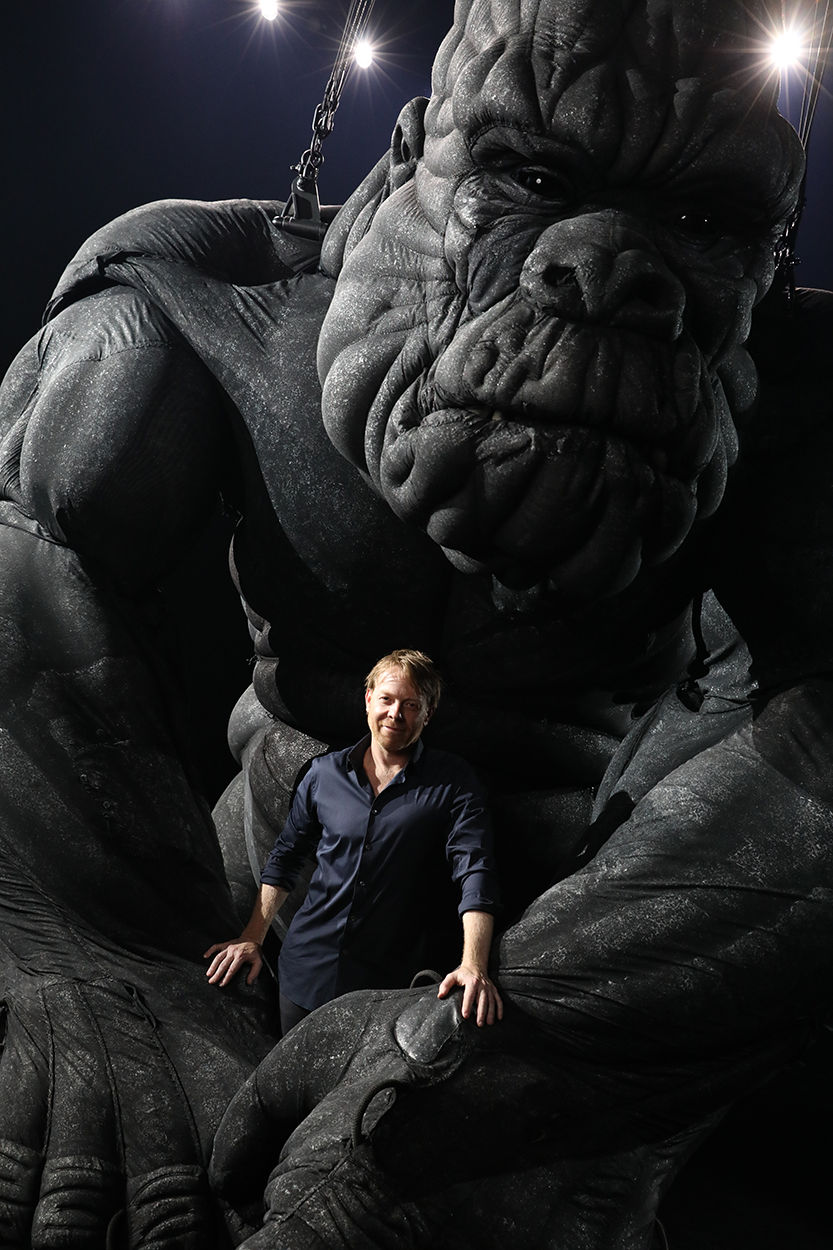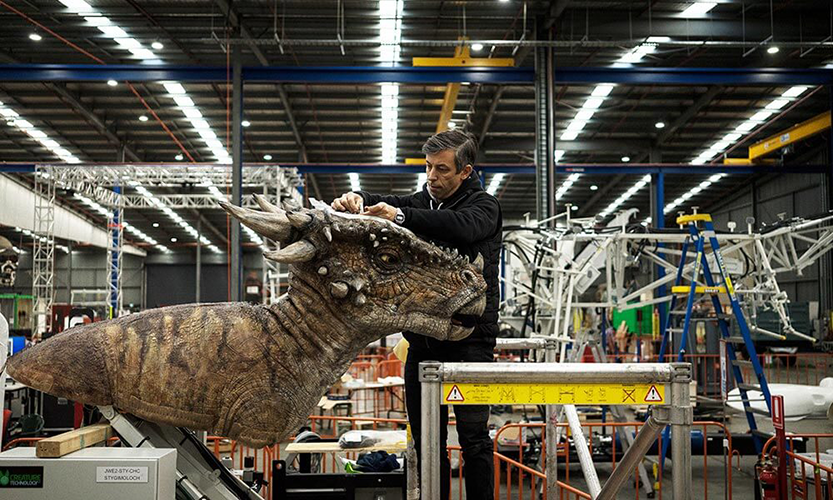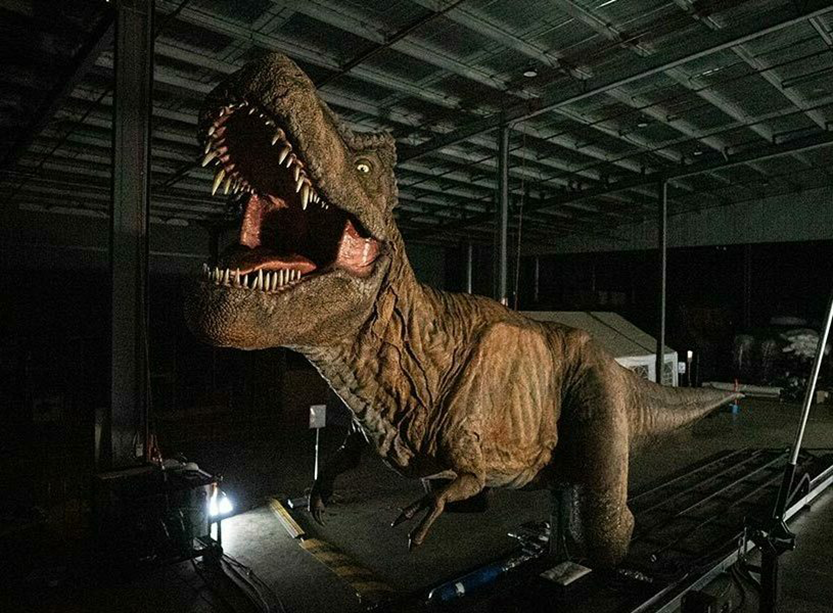
The company bringing giant creatures to life through animatronics
Creature Technology CEO and design director Sonny Tilders and his team might all have a rightful claim to the title of world’s best job.
As self-proclaimed “creature makers”, it is their responsibility to create giant lifelike robotic puppets in the form of dinosaurs, dragons, apes … the list goes on!
Serving some of the biggest large-scale productions around the world from arena tours to theme parks, Creature Technology is in a league of its own when it comes to scale and quality of animatronics.
And while many would assume such specialised innovation might take place in a country such as the United States, home to many of the world’s biggest theme parks and productions, Creature Technology does it all here in Fishermans Bend.
Formed 15 years ago by Mr Tilders and renowned Melbourne businessman and founder of Jayco Australia Gerry Ryan, the multi-award-winning company has risen to become the world leader in its field.
As a strategic partner of Universal Creative, the development arm of Universal Parks and Resorts based in Orlando, Florida, many of Creature Technology’s creations can be found in theme parks across the US.
During the past few years, despite the challenges of a global pandemic, the team provided Universal Beijing Resort’s Jurassic World Adventure with the dinosaurs needed to chase and swipe at visitors!
It also supplied the flying dragons necessary for the Beijing venue’s live arena show Untrainable as part of DreamWorks Animation’s beloved How to Train Your Dragon franchise.
Both projects each won industry awards in 2022 for best attraction and best live attraction, respectively – a source of great pride for Sonny Tilders and his talented creature makers.
“I’m very proud of what we do. It’s pretty unique,” he said. “No one really would imagine that a company like us exists – I think we’re unique on a world stage let alone the local stage.”
“There are not many companies that would have this integration of technology skillsets and creativity and scale. And I think that’s the other thing – it’s all done under one roof.”
The story of Creature Technologies began in 2007 after Mr Tilders was approached to set up the design and field team for what he described as an “ambitious arena theatre production” of the successful BBC television series Walking With Dinosaurs.
He and his team were tasked with developing ways to create “large, highly realistic” versions of the famous dinosaurs featured in the original series, and ultimately did so with great success.
The production, which performed over several years at venues around the globe such as Madison Square Gardens and Rod Laver Arena, became the world’s most successful touring show for two years running, outselling major acts at the time such as Madonna and U2.
This led to Mr Tilders, backed by business partner Gerry Ryan, to form Creature Technology – an organisation which today boasts a “wonderful melting pot” of 90 staff members with a diverse range of skills, from mechanical engineers, welders and software developers to sculptors, painters and costume makers.
It’s this incredible mixture of talent that has allowed the company to keep pushing boundaries and carve out its own unique position in the global market, all from its unique location in Fishermans Bend.
“They’re usually very large creatures and we’ve kind of cracked the code, so to speak,” Mr Tilders said.
“Such is our reputation now, our clients are all international with some exceptions, and they seek us out here on the other side of the world – we’re not exactly in the epicentre of these things. They really can’t find anyone else to do them.”
So, what does the process of building a gigantic, realistic dinosaur or dragon look like?
While every project is of a different scale, Mr Tilders said those which were more complex, such as the dinosaurs and dragons created for Universal Beijing Resorts, were “multi-million-dollar, multi-year productions”.
It all begins with a rough creative idea from the client and the team at Creature Technology gets involved very early in the process to help shape the vision, with its digital department developing all pre-visualisation and physical forms.
“We do a lot of work digitally before we even move across to the more technical engineering side of it,” Mr Tilders said.
“A lot in the team [digital department] are ex-film, computer graphics [specialists], so they’re very familiar with animating creatures, but we have to train them to think of the animated creatures as having an actual physical life ultimately.”
Next, it’s onto the mechanical design team. According to Mr Tilders, this team is charged with the responsibility of configuring all the creature’s movements from its pace to its acceleration and so forth.
Then, it moves onto the electrical engineers who focus on issues such as motor sizing and hydraulics before the control systems engineers essentially integrate the creature’s “brains into the system” to ensure viable and safe operation.
“I’d say the first half of a three-year project is purely design,” Mr Tilders said. “Not a single bit of steel is cut.”
“Then we produce shot drawings, and it goes out to the floor to do all of the very precise welding and fitting and turning and machining.”
But while shape, movement and control are essential elements to making a creature appear as a life-like as possible, it’s the external features that are critical to completing the overall vision.
From sculpting plasticine to mould silicon skins, to making muscle structures out of bags of stretched netting and styrene beans to stretch and contract underneath to allow that same skin to behave in a real manner, the team goes to extreme lengths in pursuit of perfection.
Once all of those layers are placed on top of the mechanical structure, it then goes through a journey of rigorous testing to ensure it reliability, while very specialised service manuals are compiled for the client.
In comparing one of its creatures to your typical Ford Territory, where there is little to no difference between one of its various annual models, Mr Tilders said “everything we do is so different each time”.
We have to provide, essentially, a manual of how to service and repair these creatures for 20 years,” he said. “So, while you’re making a one-off, you need to provide a service manual, almost as if you need to design a dinosaur to be maintained the same as a Ford Territory.
“People don’t realise how onerous it is to make something that’s so reliable and so safe. They won’t collapse on someone. These things run 16 hours a day continuously, 365 days a year. And if they have a stoppage, they have to offboard people.”
Creating something different with each new project meant Creature Technology was constantly on “that leading edge” when it came to innovation, according to Mr Tilders, who said the whole team got a “real kick out of doing something that’s unique”.
“I’m so proud of the achievement of the team. We all are. Without that sense of ownership and pride in what we do it would just be another business,” he said, adding, “it’s stressful though, I won’t lie! The deadlines are pretty severe.”
As for its Plummer St location in Fishermans Bend, he said it was vital for the company to have a design, manufacturing and technology driven facility close to the centre of Melbourne’s CBD as a “hub” for its staff.
And while not heavily across the current planning work shaping its surroundings in the precinct, Mr Tilders referenced a couple of driving forces underpinning the vision that aligned with its own future needs – collaboration and connectivity.
“We could have set out in South Dandenong, but getting some people from Geelong, Brunswick … it’s such a verified space we work in. The Fishermans Bend precinct represents one of the last hubs for businesses like us to operate in – that is centralised, not regionalised. That’s why it’s important for us,” he said.
“When Holden was here, we co-mingled with some of their design team. We had a bit of a collegiate relationship with them – that was really nice. It would be great if we’re able to work alongside some of other innovate companies.”
“But, even to have a tram would be great!”
For more information:

Revitalisation of Alexandra Gardens progresses

Build-to-rent development gets green light in South Melbourne








 Download the Latest Edition
Download the Latest Edition